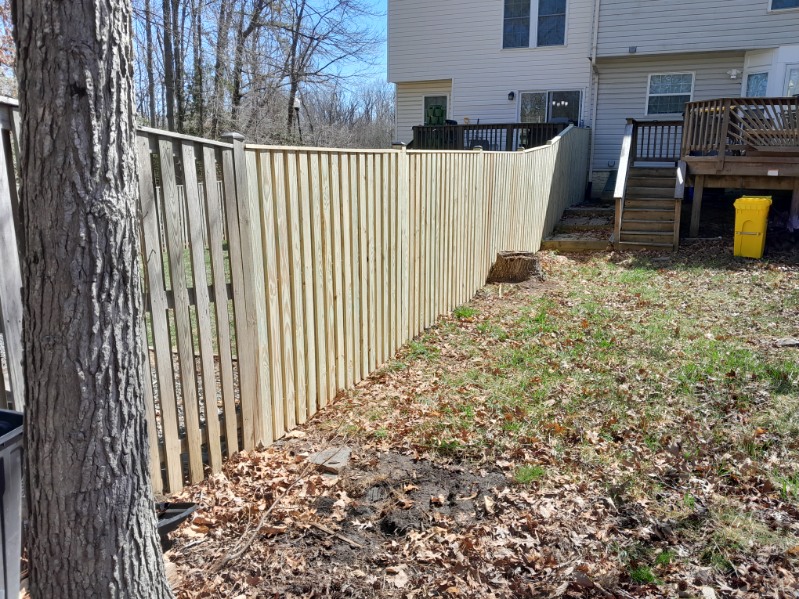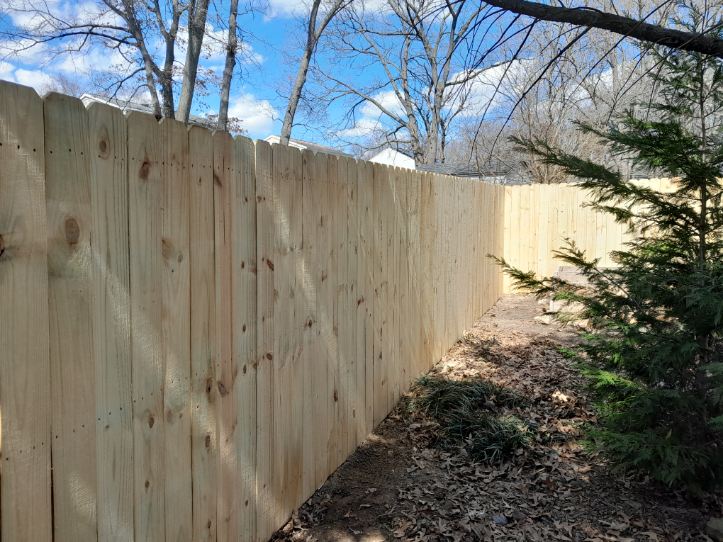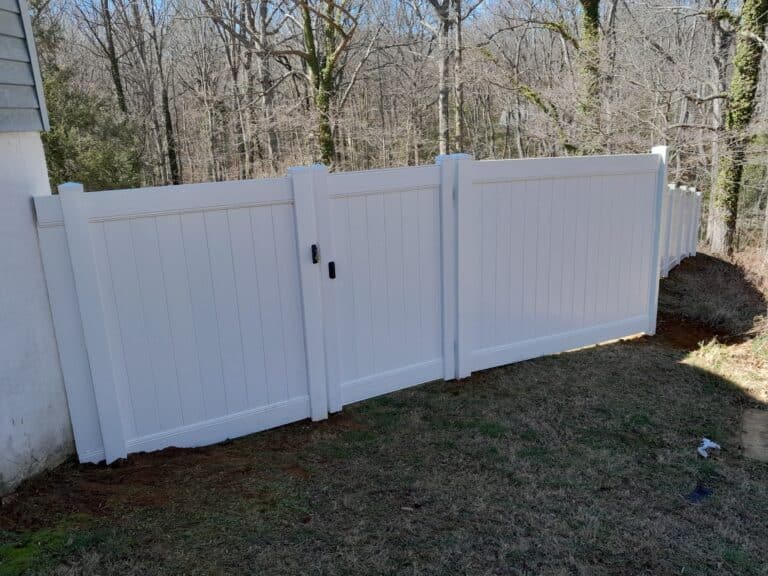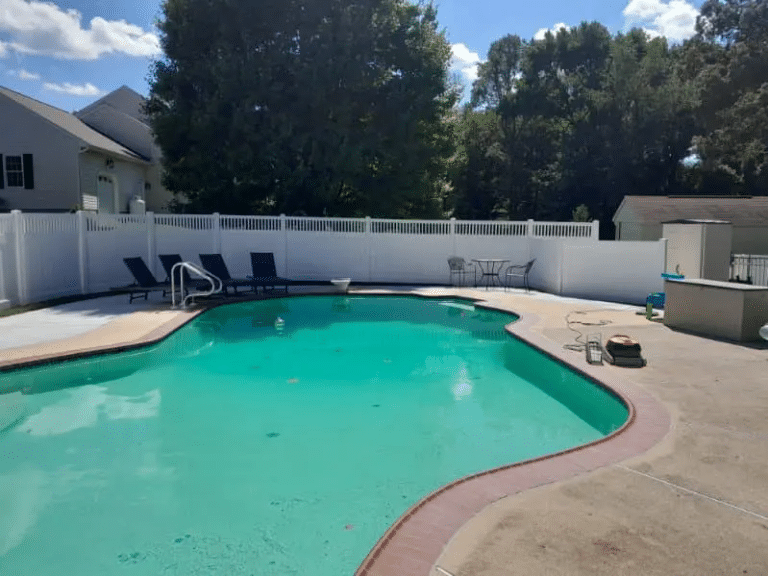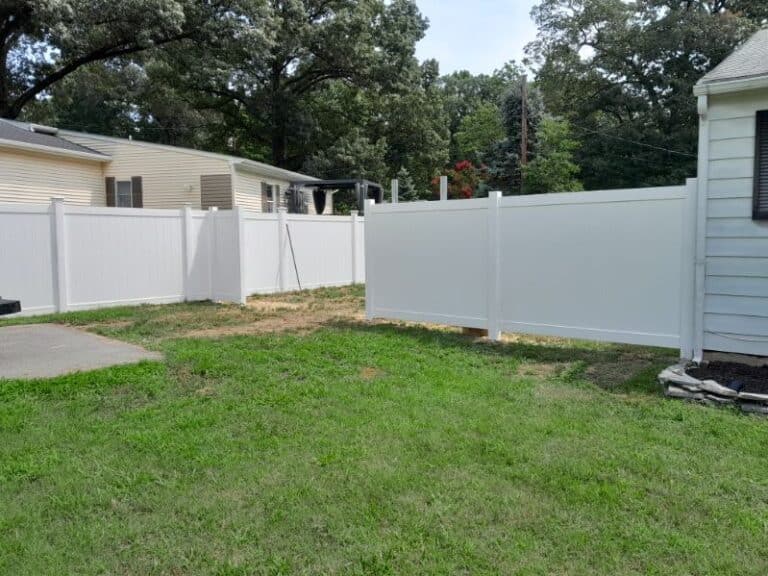A fence should end arguments—not start them. In local neighborhoods, the quickest way a friendly wave turns into a tense stare is when a fence lands even a little over the line. The fix is simple: slow down at the start. Check the real boundary, share the plan, and build according to the rules. That’s how a good fence installation in Glen Burnie adds privacy and value without drama.
Why property line clarity matters in Glen Burnie, MD?
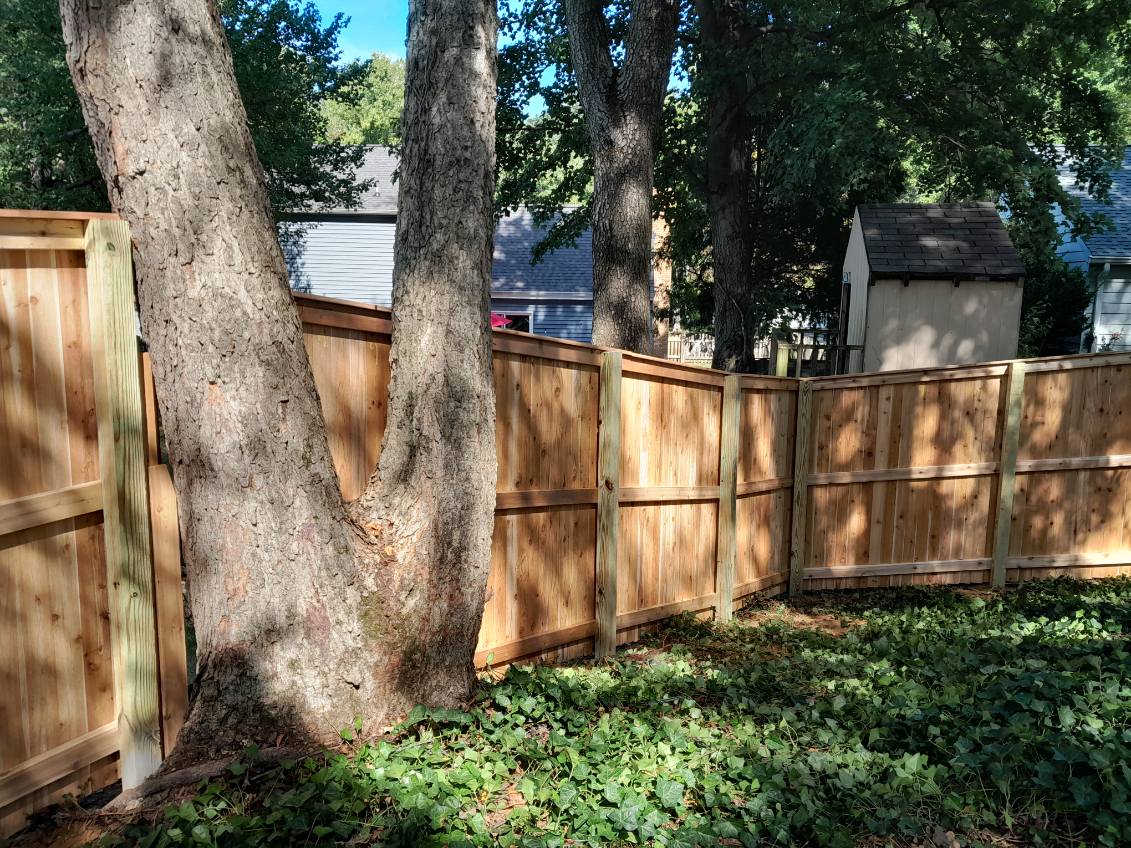
In Maryland, a mortgage “location drawing” is not a boundary survey and can’t be used to place a fence on a property line. When accuracy matters, a licensed boundary survey helps avoid encroachment and costly do‑overs.
- Location drawings are not designed to show exact property boundaries.
- A boundary survey is the right document for fences near a line.
- Using the correct survey type upfront prevents moving a fence later.
Step 1: Confirm your property boundaries
Start with the official papers. Deeds and plats are available in Maryland’s public land records (often accessed through MDLandRec and PLATS.NET), so owners can review the latest legal description and map before work starts. If the fence is close to a line or corner pins are missing, a licensed boundary survey is the only reliable way to confirm placement. Near Elizabeth Road Dog Park and other older blocks, markers may be disturbed; plan time for a surveyor to re‑set corners and stake the line as a scheduling best practice.
Practical checklist:
- Find the most recent deed and recorded plat.
- Look for corner pins, but don’t rely on them if they’re missing or shifted.
- Hire a licensed surveyor for a boundary survey when precision matters.
- Ask the surveyor to set stakes on the line and provide a sketch for the fence plan.
- Keep copies of all documents in a project folder.
Step 2: Understand local regulations
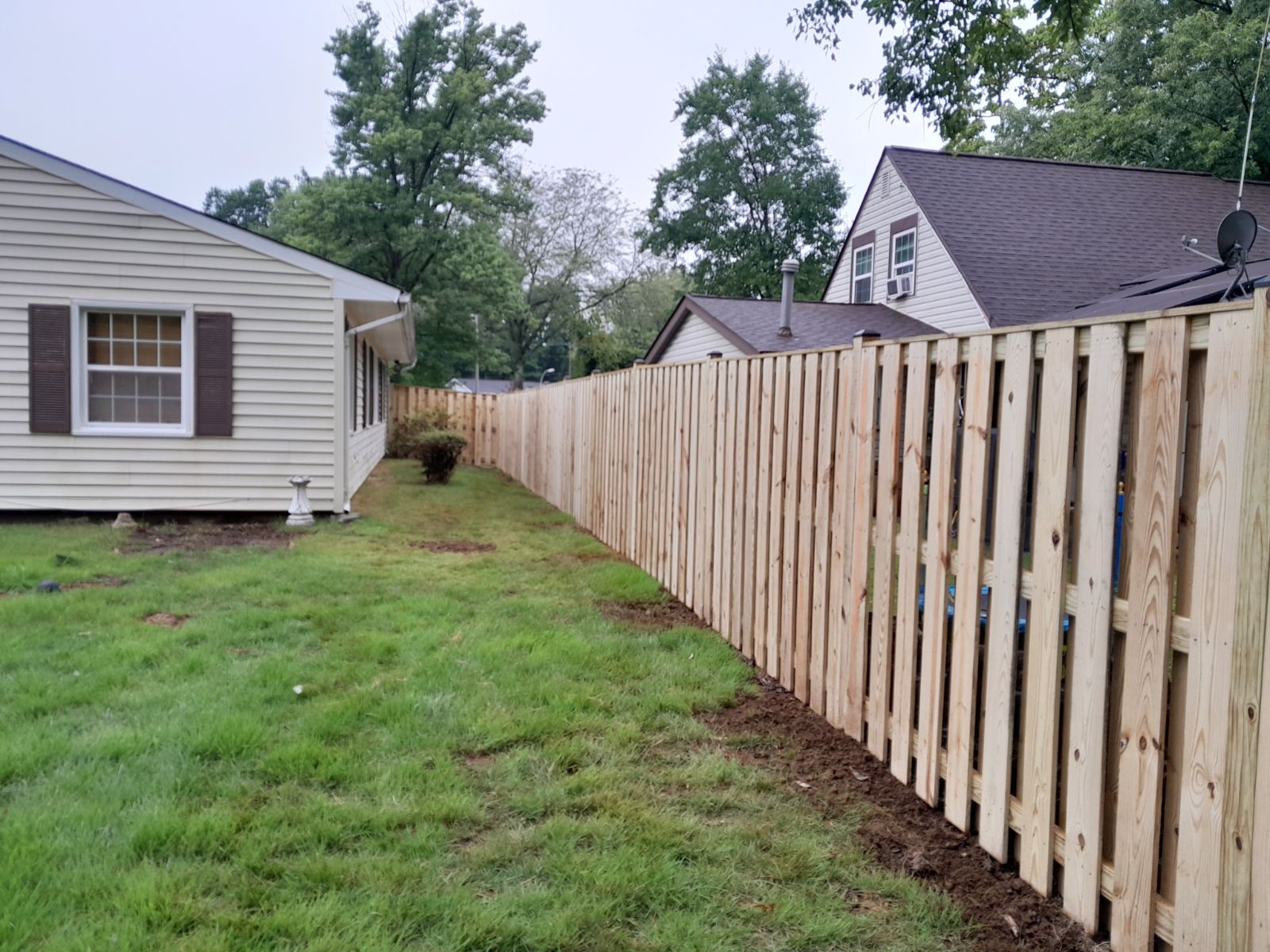
Anne Arundel County’s construction code says most residential fences 6 feet or lower don’t need a building permit, but fences on waterfront property need a permit at any height. Checking the correct rule for the lot type is part of getting it right the first time. Corner lots also have special rules for which road counts as the “front,” which can affect placement and visibility—see Anne Arundel County Zoning Code §18‑2‑304 when planning a corner‑lot fence.
Key points:
- Under or at 6 ft: usually no building permit for standard residential fences in Glen Burnie.
- Waterfront lots: permit needed at any height.
- Corner lots: confirm “front road” and plan for visibility at driveways and corners.
- HOAs and overlays: check recorded covenants and any special district rules.
- When unsure, bring code sections to a quick call with the permit office.
Step 3: Talk to your neighbors early
It’s not required by county code, but sharing a staked line and a simple sketch from the survey with neighbors prevents surprises and shows how the fence will sit. This also builds a clear paper trail if questions come up later, which fits how boundary questions are often handled—with surveys and recorded documents.
Tips for a smooth conversation:
- Walk the staked line together and show the survey sketch.
- Explain height, style, and any gates near the line.
- Share the work schedule and how access will be handled.
- Offer to adjust minor details that don’t affect compliance.
- Confirm shared drainage paths won’t be blocked by the fence.
Step 4: Plan around local conditions
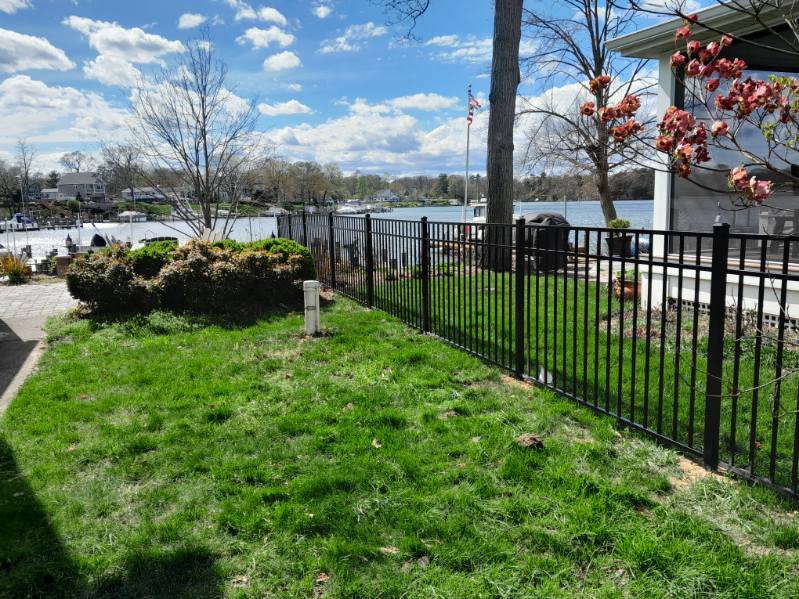
Construct fences appropriate for Glen Burnie’s changing seasons and weather conditions. County public works fence specs (used on county projects) show the value of proper posts and materials for Maryland’s climate—a good model for private work too. Think simple: rain and freeze‑thaw come and go, so set post depth and drainage to handle moisture and cold snaps. This is especially useful in close-knit neighborhoods with tight streets, such as Cody Drive and Elizabeth Road, where setup and access are important, and it extends the lifespan of the fences.
Installation best practices:
- Set posts below the frost line; use gravel at the base for drainage where suitable.
- Slope concrete tops away from posts to shed water.
- Leave small gaps for air flow in privacy designs to reduce wind load.
- Keep a consistent offset from the boundary to avoid accidental encroachment.
- Mark and protect utilities before digging; call before you dig.
Step 5: Work with professionals
If your Glen Burnie fence is close to a property line, working with professionals helps you avoid costly mistakes. When accuracy matters, only a licensed boundary survey can mark the line for fence placement. Pros also rely on official deeds and plats and prepare paperwork that matches county code, which can make reviews smoother without promising exact timelines. Keep your contracts, survey plat, layout sketch, and any approvals together you’re ready if questions come up later.
How pros help:
- Confirm boundaries against recorded documents.
- Flag corner‑lot and waterfront rules that affect height and placement.
- Prepare clean site sketches for installers and neighbors.
- Sequence work to avoid damage to neighboring yards.
- Provide documentation that supports quick answers if a question comes up.
What to do if a dispute happens
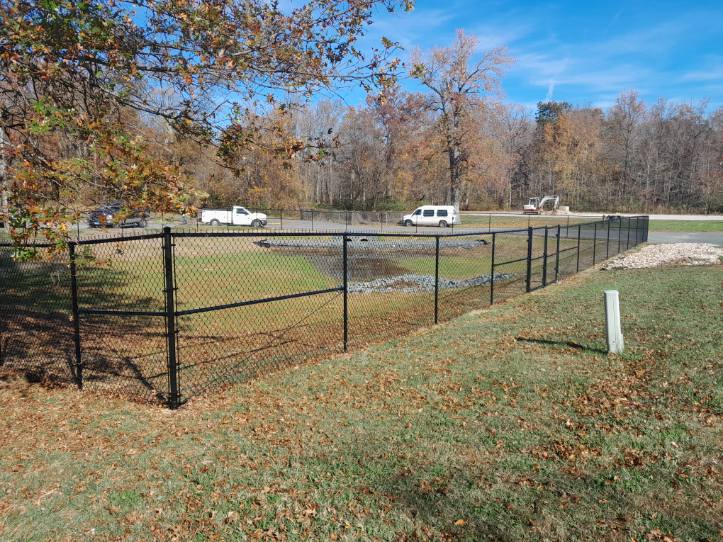
If there’s a disagreement, pull together the boundary survey, deed, plat, and project records first. Boundary questions are typically resolved using survey evidence, physical markers, and recorded documents—having these ready speeds things up. Mediation can help settle issues with fencing and property lines in Glen Burnie without going to court right away, and a complete file makes that easier.
Steps to de‑escalate:
- Stay calm; stick to the facts shown on the survey and records.
- Share the surveyor’s stakes and layout sketch on site.
- Offer a small offset from the line as a compromise if practical.
- Try mediation if talks stall; keep notes of all conversations.
- Avoid changing the fencing without updated survey input.
Frequently Asked Questions:
Do I need a permit for my Glen Burnie fence project?
Most standard residential fences up to 6 feet in Glen Burnie don’t need a building permit, but exceptions apply. Waterfront lots need permits, no matter the height. Corner lots have special zoning rules. Check Anne Arundel County’s code and confirm HOA restrictions before building. When in doubt, contact the Inspections & Permits office to avoid setbacks later.
What’s the difference between a location drawing and a boundary survey in Maryland?
A location drawing, often found with mortgages, shows buildings on the lot. It does not show legal property boundaries. Maryland law doesn’t allow location drawings to be used for construction. A licensed boundary survey provides exact line placement and corner stakes. If your fence is close to a property line or markers are missing, always hire a surveyor to prevent costly mistakes.
How can I avoid fence disputes with my Glen Burnie neighbors?
Good communication prevents problems. Walk the staked property line with your neighbor and share the survey sketch before work begins. Explain the style, height, and location of the fence, and confirm drainage won’t be blocked. Offering small adjustments where possible shows goodwill. Keeping a record of the survey and shared plans creates a clear paper trail if questions arise later.
What property line issues are common in Glen Burnie neighborhoods?
Older neighborhoods by Elizabeth Road Dog Park and Cody Drive often have shifted or missing corner pins. This makes boundary surveys important before building. Tight streets and smaller lots increase the risk of encroachment. Weather impacts fence stability over time. So, using deeper posts and ensuring proper drainage can help prevent future issues. Careful planning ensures compliance with county rules and smooth neighbor relations.
What should I do if a property line dispute happens after my fence is built?
Start by reviewing your boundary survey, deed, and recorded plat to confirm the fence’s placement. Share the surveyor’s stakes and layout sketch with your neighbor as evidence. Offering a small offset can sometimes resolve disputes quickly. If disagreements continue, mediation is often more effective than the court. Keeping organized project records ensures any discussions stay fact-based and easier to resolve.
Make your next step count
Ready to build without the backlash? Start with the records, stake the line with a licensed surveyor, and plan the layout with county rules in mind. Then have a quick, friendly chat with neighbors. That simple sequence keeps projects smooth, compliant, and neighbor‑friendly. Contact All Around Fence, LLC (443) 838-9374 or visit us at 8130 Ventnor Road, Pasadena, MD 21122.

